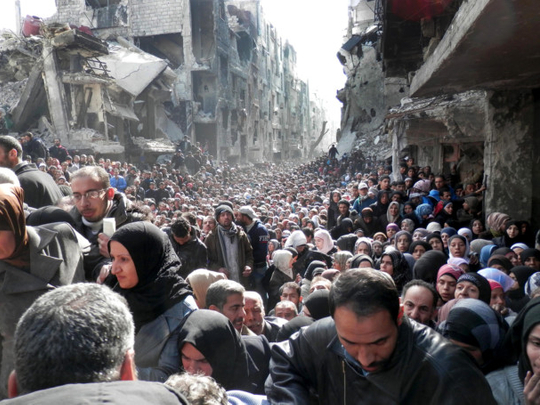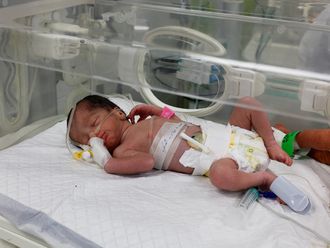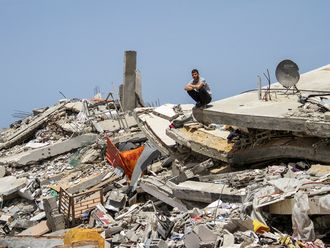
United Nations: A UN photograph showing a sea of hungry Palestinians awaiting emergency food amid the detritus of their bomb-ravaged neighbourhood near Damascus has been retweeted more than 8 million times in the past few weeks, becoming such an arresting image of the Syrian civil war that some blogosphere sceptics have suggested that it was digitally faked. The suggestion provoked a passionate denial on Tuesday by the official responsible for distributing the photo.
The official, Chris Gunness, the spokesman for the UN Relief and Works Agency, which administers aid to Palestinian refugees in the Middle East, said he was stupefied by the expressions of doubt about the photo. At the same time, Gunness said, the scepticism may partly reflect a blindness by many people to what is happening in Syria, which entered its fourth year of war this month.
“The photo is an exact replica of reality,” Gunness said in an interview from occupied Jerusalem, where he is based. “I can understand why that reality would beggar belief. But in the 21st century, such a scene exists. People are incredulous because it’s hard to believe.”
Gunness, who has expressed personal outrage at conditions at the Yarmouk camp, chose the photograph to represent the suffering in Syria as part of a social media campaign known as a Thunderclap.
The campaign, by 130 humanitarian relief organisations, including major UN agencies, is pressing for access to Syrian civilians trapped in fighting between President Bashar Al Assad’s loyalists and insurgents.
Organisers of the campaign are planning to display the photo on a giant screen in Times Square when the number of retweets reaches 23 million — matching Syria’s pre-war population — which is expected to happen next week.
The Yarmouk photo was published by nearly 1,000 newspapers, including The New York Times. Britain’s Daily Mail called it a “biblical picture of suffering.” On Twitter, the photo provoked expressions of incredulity and outrage that such conditions existed, as well as questions about its authenticity.
Gunness called such speculation “completely baseless and utter nonsense.”
In a statement, Gunness also denied that his agency had taken sides in the conflict by focusing on the Palestinian victims.
“When you work in war zones across the Middle East as UNRWA has done for over six decades, the ‘neutrality instinct’ is second nature,” he said.
Gunness said that when he first viewed the photograph, taken in late January, and showing Palestinians grimly queuing for food distribution in what remained of the Yarmouk camp, which is still home to an estimated 18,000 people, he knew it would invite emotional reactions.
“I saw that image and said, ‘This has the wow factor,’” he said. “It’s an iconic image, and the more it goes around the better.”
Digital photography experts said they believed that the image was real.
Hany Fareed, a computer science professor at Dartmouth College who specialises in image forensics, said a relatively simple “clone test” — an examination to reveal whether individuals in the crowd looked alike and would thus be evidence of alteration — showed no such duplications.
He also said the consistency of light and shadow in the photograph would have been enormously difficult to fabricate. More persuasive, he said, was a video of the Yarmouk camp shot at the same time that corroborated the scene.
“There is no evidence that photo is fake,” Fareed said. “So now everybody should shut up about it.”
— New York Times News Service












